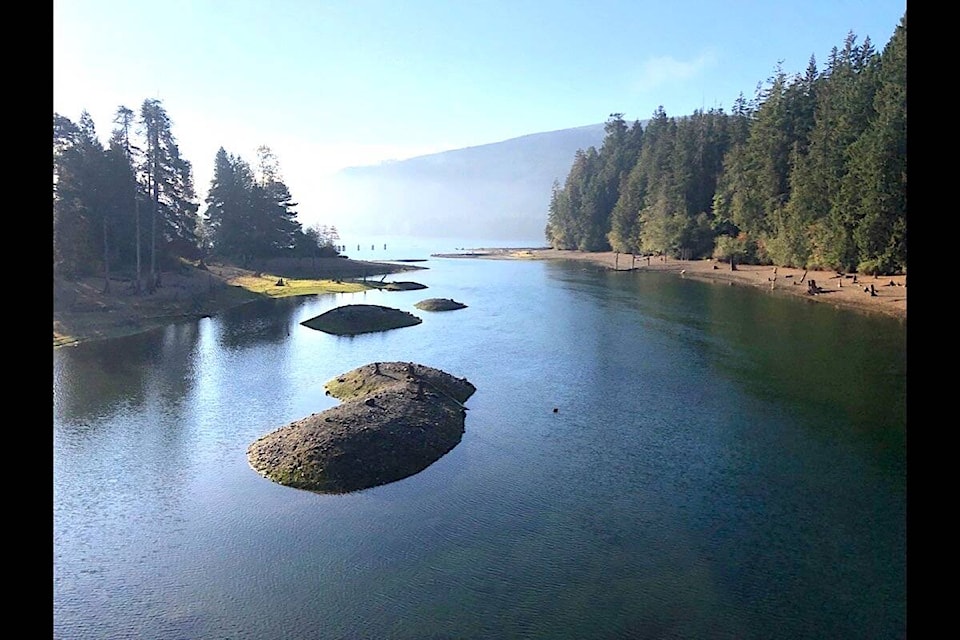After a wet four months until mid-July, it quickly transitioned into one of the driest and hottest extended periods to October on record for Vancouver Island hydroelectric watersheds. Water inflows into Comox Lake Reservoir dropped considerably and the reservoir level has continued to drop since mid-July. BC Hydro is reducing Puntledge River flows Wednesday by one-third as an additional conservation effort in consideration of downstream fish habitat and being able to maintain the new river flow rate through October should conditions remain dry.
The reservoir is considered full at about 135.3 metres. When it reaches 131 metres and particularly 130.8 metres, Hydro is concerned about how much water may pass down to the Comox Dam from the lake. The dam is about 300 metres downstream from the lake outlet. The reservoir level peaked at 135.2 metres on July 13. It has been slowly moving downward ever since. The current reservoir level is 131.7 metres and dropping about four centimetres per day. At the current river flow rate, and no precipitation in the near-term forecast, the reservoir level could reach 131 metres by Oct. 19.
The river’s minimum fish habitat flow below the Puntledge powerhouse is 15.7 cubic metres per second (m3/s). This is outlined in the hydroelectric water licence with the Comptroller of Water Rights. The flow level is subject to available water storage and weather forecasting.
The precipitation since July has been low and temperatures warm. In August and September, total precipitation in the upper watershed was 21 and 16 per cent of normal, respectively. The first few weeks of October look very dry. Water inflows into the reservoir this week are only about 4 m3/s.
Hydro was running the powerhouse at full capacity or 33 m3/s to July 17 given the good water supply at the time.
“We decided to lower the downstream flow to 26 m3/s on July 18 and held it there until July 28,” said Stephen Watson, Hydro’s stakeholder engagement advisor. “Seeing the drying trend set in and for a typical summer operation, we moved the discharge from Comox Dam down to 18 m3/s on July 29 and eventually 16 m3/s to Sept. 20. The only exception was during a heat wave, and the reservoir level being above normal at the time, when we increased flows for power generation to help meet customer demand and had a flow rate of about 26 m3/s from Aug. 16 to 19. We lowered the river flow to 12 m3/s on Sept. 20.
“When we move Puntledge River flows below the fish habitat minimum flow we engage with the Comptroller of Water Rights on the licence, government fish agencies on fish habitat, and the Comox Valley Regional District on domestic water restrictions.”
On Wednesday morning, the plan was to reduce the flow to 8 m3/s — a similar rate reached last year. By moving to this flow rate, Hydro can sustain flows until the end of October.
“It will lessen the rate of decline within the reservoir water storage,” Watson said.
BC Hydro will continue to closely watch the weather situation and update flow modelling each day.
